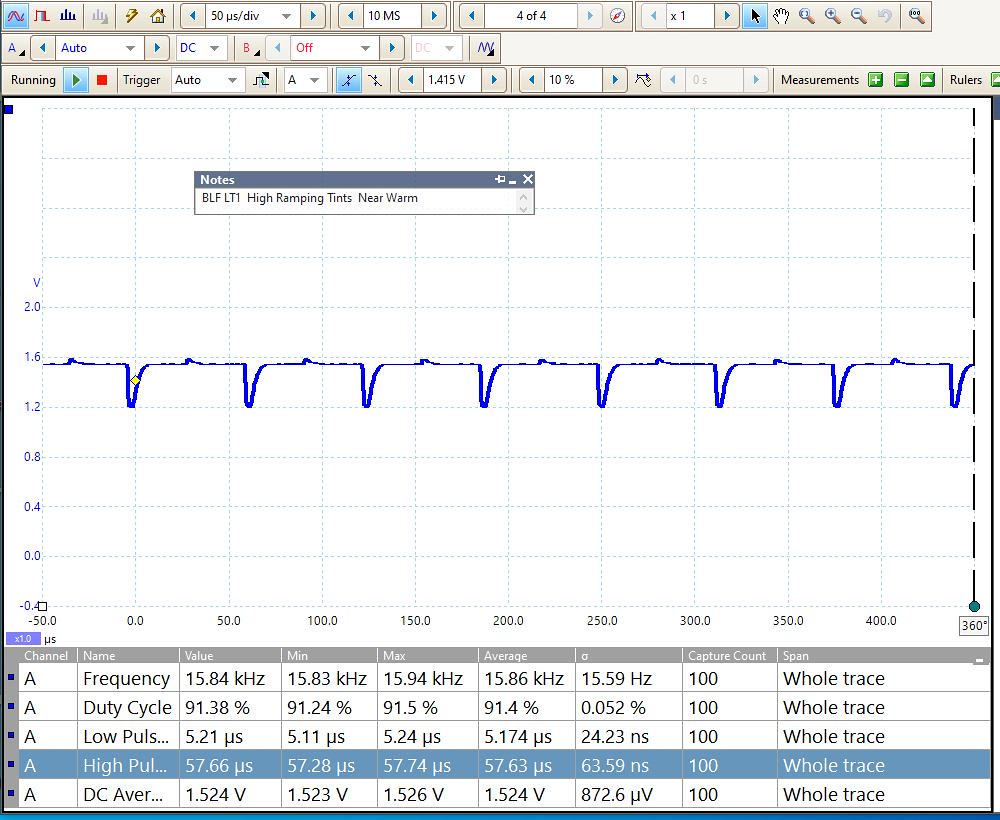This is way more sophisticated that I expected.
I managed to get one of the Amazon deals that Sofirn has going and I got the light last Monday.
I checked the batteries and one was at 3.71v and the rest at 3.93v.
No biggie. Into the Vapecell S4+ for a capacity test. Gotta love 2a charging BTY.
All off them batted above 3000.
The LT1 in its natural environment - The Test Bench

Into the light they went. Now it’s time to play. After setting things up like I wanted, it was time for a run test. I always like to run any new light at max brightness to see if anything unexpected happens.
The LT1 is so well behaved, as I expected, and found no anomalies – Except one.
The darn thing will not stop shining!
After the batteries get to the 2.9v or so, the light steps down to the lowest setting.
And it stays there – I guess forever.
I kept bumping back up to full brightness every time I walked by.
It stepped down and kept shining.
After hours and hours (and hours) of this, I figured the photons were never going to stop dancing– so I turned it off.
Checked the voltage, still 2.9v.
Charging
Plugging in the included USB cable to a high quality USB power supply, it started charging.
The most current I saw was about 1.59a. And it was mostly around 1.48a.
I have seen over 2a from this power source before, and I kind of was expecting more from the LT1.
Later – Much Later – I happened to walk into the room where the LT1 was charging.
The light was pulling 0.08a. And, as luck would have it, the charging LED went from red to green as I watched it.
The current draw was 0.00a after the LED turned green – Perfect.
I pulled a battery and it was at 4.16v. BRAVO!
I don’t know if this is by design? Or I have the luck of the draw.
I would much rather the cells end up a little low for the sake of longevity.
LT1 Charge Results

It took 8 hours and 1 minute to charge the light.
10,096mAh of angry pixies marched into the batteries.
Now to find the cut off voltage
I keep some crappy laptop pulls for this sort of thing. I put one of those in there starting at 2.85v.
This is a pure flattop and the LT1 pushed the wrapper down enough to make contact.
On the brightest setting, it soon stepped down to the lowest.
The internal batt check indicated 2.9v.
I jumped it up again and let it run till it turned off. I missed the shutoff.
The battery was sitting at 2.7v.
I did it again, and caught the shutoff.
The battery was at 2.65v.
So I’m calling that the lower value.
So 4.16v at the top and 2.65v at the bottom.
I call that a winner!
BLF LT1 PWM
Let’s take a look at the PWM. A light is useless if the PWM is nasty. And many lamps do have crappy PWM.
I have mine set for 6 mode steps (low=0, then five more) so I can repeat brightness levels.
Starting with a Mid Level Tint.
PWM Low (Step 0)

We see a PWM of 3.96kHz and a Duty Cycle of 1.27%
PWM Step 1

The PWM jumps to 15.8kHz, Duty Cycle 5.9%
PWM Step 2

Same PWM Freq. Duty Cycle increases to 8.4%
PWM Step 3

Same PWM, Duty Cycle 17.5%
PWM Step 4

Same PWM, Duty Cycle 32.9%
PWM Step 5 (High)

PWM still 15.8kHz, Duty Cycle 53.7%
Bring On The Tints…
Now things get interesting
Going to full warm color


Low - and a Mid step.
The Low and Mid Modes look the same.
Stepping up to Full Brightness

There is no PWM at all. The light is running a DC offset.
The same goes for all cool LEDs


Mid Step – and Full Cool.
But Wait – There’s More
Still on High,
Ramping away from all one color LEDs toward the middle tint

One set of LEDs is starting to drop duty cycle, and the other is increasing.
A Little farther away from the max tint

Farther Still

And in the middle of the tint range

The middle tint could fool me into thinking the output was just a Square Wave PWM (Foolish Boy).
Lots of fancy footwork going on to try to make the brightness even across all tint ranges.
Heck of a lot of thinking and code went into this, Thinks I.
Congratulations Dennis/DBSAR, TK, Sofirn/Berry, and the rest of the BLF crew that made this possible.
A standard against which all others shall be compared for many years.
All the Best,
Jeff





